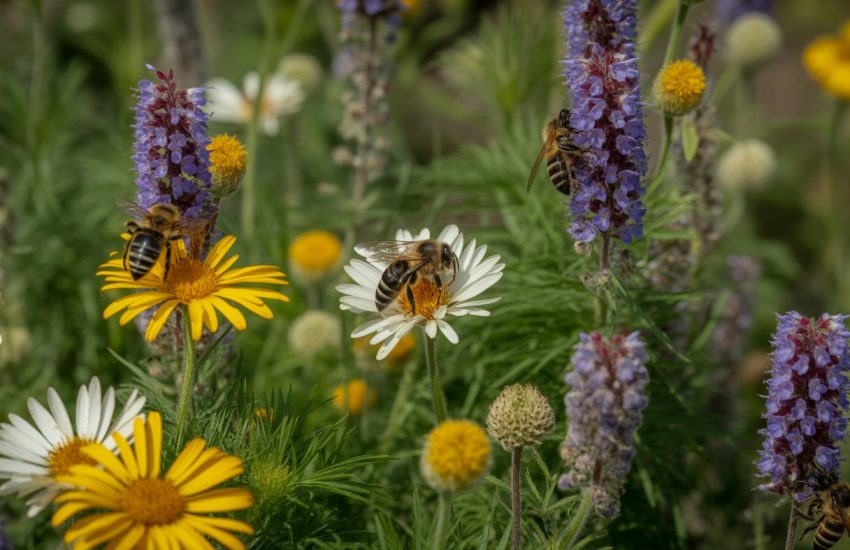Aphids on Indoor Plants: How to Identify and Control Them
Aphids are tiny insects that can cause significant damage to indoor plants. These pests feed on the sap of plants and reproduce quickly, making it difficult to control their population. Aphids can be identified by their pear-shaped bodies and long antennae, and they come in a variety of colors, including green, brown, and black.
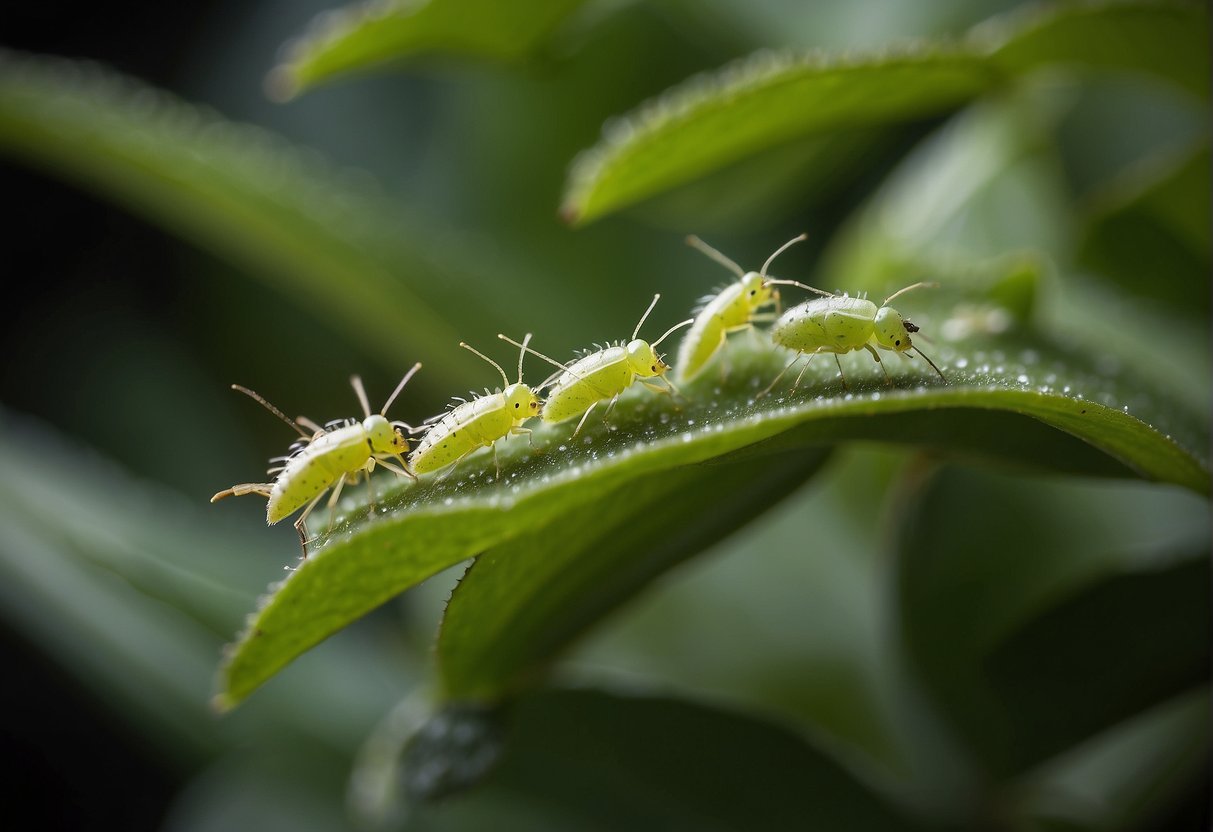
Indoor plants can be particularly vulnerable to aphid infestations because they do not have the natural predators that outdoor plants have. Additionally, the controlled environment of indoor spaces can provide an ideal breeding ground for aphids. If left untreated, aphids can cause stunted growth, yellowing leaves, and even death of the plant. It is important for plant owners to be aware of the signs of aphid infestations and take appropriate measures to control them.
Identifying Aphid Infestation
Aphids are one of the most common pests found on indoor plants. They are tiny, pear-shaped bodies that come in a variety of colors, including green, black, and brown. Aphids can be easily identified by their cornicles, which are small, tube-like structures located at the end of their bodies.
Common Signs of Aphids
One of the most common signs of an aphid infestation is curling or yellowing leaves. Aphids feed on the sap of plants, which can cause leaves to become distorted and discolored. Another sign of an aphid infestation is the presence of honeydew, a sticky substance secreted by aphids as they feed. Honeydew can attract other pests and can also lead to the growth of sooty mold on leaves.
Types of Aphids on Indoor Plants
There are several types of aphids that can infest indoor plants. The most common types include the green peach aphid, the melon aphid, and the cotton aphid. Each type of aphid has its own unique characteristics, but they all feed on the sap of plants and can cause damage to leaves and other plant parts.
In summary, identifying an aphid infestation on indoor plants can be done by looking for common signs such as curling or yellowing leaves and the presence of honeydew. There are several types of aphids that can infest indoor plants, and it is important to identify the specific type in order to effectively treat the infestation.
Understanding Aphid Biology
Aphid Life Cycle
Aphids are small, soft-bodied insects that feed on the sap of plants. They have a complex life cycle that involves both sexual and asexual reproduction. The life cycle of aphids can be divided into four stages: egg, nymph, winged adult, and adult.
In the spring, female aphids lay eggs on the stems of plants. These eggs hatch into nymphs, which resemble smaller versions of the adult aphids. Nymphs feed on the sap of plants and molt several times before reaching maturity.
As the summer progresses, some of the adult aphids develop wings and fly to new plants, where they establish new colonies. These winged aphids are known as alates.
In the fall, male and female aphids mate, and the females lay eggs that will overwinter on the plant. These eggs will hatch in the spring, starting the cycle all over again.
Reproduction Patterns
Aphids reproduce asexually for most of their life cycle, which means that females can produce offspring without mating with a male. This allows aphid populations to grow quickly, as a single female can produce many offspring in a short period of time.
However, sexual reproduction is important for genetic diversity and allows for adaptation to changing environments. In the fall, as the days get shorter and temperatures cool, some aphids develop wings and fly to new plants to mate. The resulting offspring will have a mix of genetic traits from both parents, increasing the chances of survival in changing conditions.
In conclusion, understanding the life cycle and reproduction patterns of aphids is important for managing their populations on indoor plants. By disrupting their life cycle and limiting their ability to reproduce, it is possible to control aphid populations and prevent damage to plants.
Preventive Measures
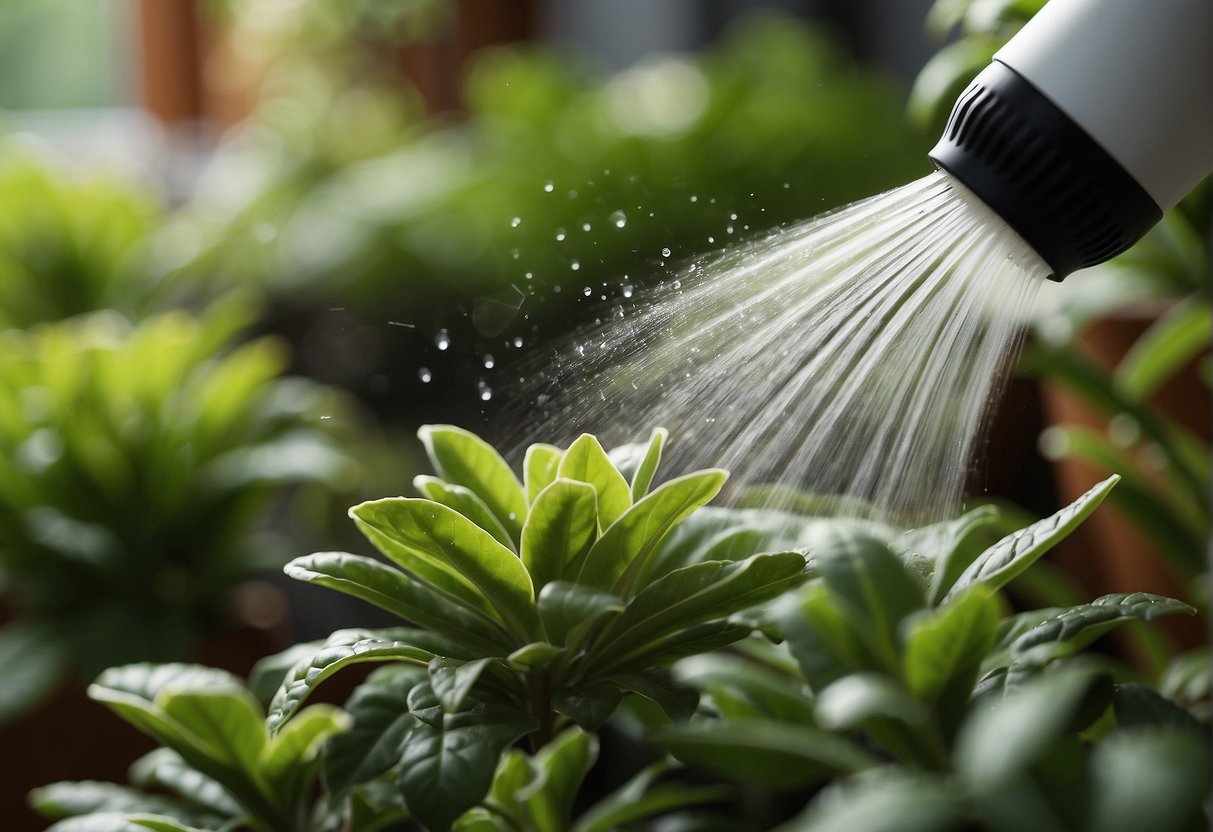
Cultural Practices
Preventing aphids on indoor plants can be achieved by implementing certain cultural practices. One of the most important practices is to maintain a clean and healthy indoor garden environment. Regular cleaning of plant containers, soil, and plant foliage can help prevent aphid infestations. This can be done by wiping plant leaves with a damp cloth or spraying them with water. In addition, removing any dead or diseased plant material can also help prevent aphids from spreading.
Companion Planting
Another effective preventive measure is companion planting. Certain plants such as catnip, mustard, nasturtium, and chives have been found to repel aphids. Planting these companion plants near susceptible indoor plants can help deter aphids from infesting them. In addition, planting a diverse range of plants in the indoor garden can help prevent aphid infestations as they are less likely to spread in a diverse environment.
Regular Inspection
Early detection of aphid infestations is crucial in preventing their spread. Regular inspection of indoor plants can help detect aphids before they become a problem. Signs of aphids include yellowing or wilting leaves, distorted growth, and the presence of sticky honeydew on plant foliage. If aphids are detected, they can be removed by hand or by using a gentle spray of water or insecticidal soap.
By implementing these preventive measures, indoor gardeners can effectively prevent aphid infestations and maintain healthy and thriving plants.
Natural Aphid Control Methods
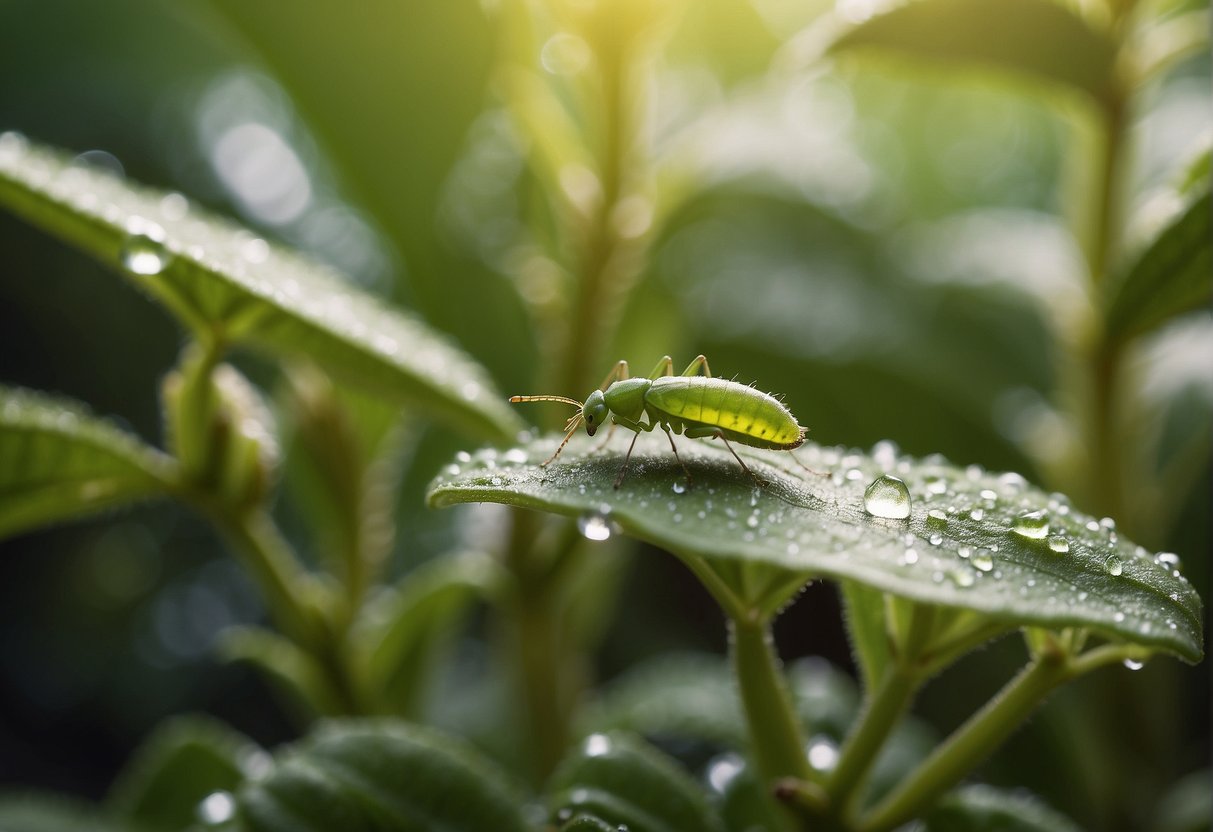
Beneficial Insects
One of the most effective ways to control aphids on indoor plants is through the use of natural predators. Ladybugs, lacewings, and parasitic wasps are all beneficial insects that can help control aphid populations. These insects prey on aphids and can significantly reduce their numbers.
Ladybugs are perhaps the most well-known natural predator of aphids. They can be purchased from garden centers or online and released onto indoor plants. Lacewings are another beneficial insect that can be purchased and released onto plants. They are particularly effective at controlling aphids in their larval stage.
Parasitic wasps are another natural predator of aphids. They lay their eggs inside the aphids, which eventually kills them. These wasps can be attracted to indoor plants by planting flowers that they are attracted to, such as dill, fennel, and yarrow.
Homemade Remedies
There are several homemade remedies that can be used to control aphids on indoor plants. One of the most popular is a mixture of garlic and cayenne pepper. This mixture can be sprayed onto plants to repel aphids.
Another effective homemade remedy is a mixture of soap and water. Simply mix a few drops of dish soap with water and spray onto plants. The soap helps to suffocate the aphids, while the water helps to wash them away.
Neem oil is another natural remedy that can be used to control aphids. It is derived from the neem tree and can be purchased at most garden centers. Simply mix a few drops of neem oil with water and spray onto plants.
Integrated pest management is a holistic approach to pest control that involves using a combination of natural and chemical methods. This approach can be particularly effective at controlling aphids on indoor plants. By using natural predators and homemade remedies in combination with chemical pesticides, it is possible to significantly reduce aphid populations while minimizing the impact on the environment.
Chemical Control Strategies
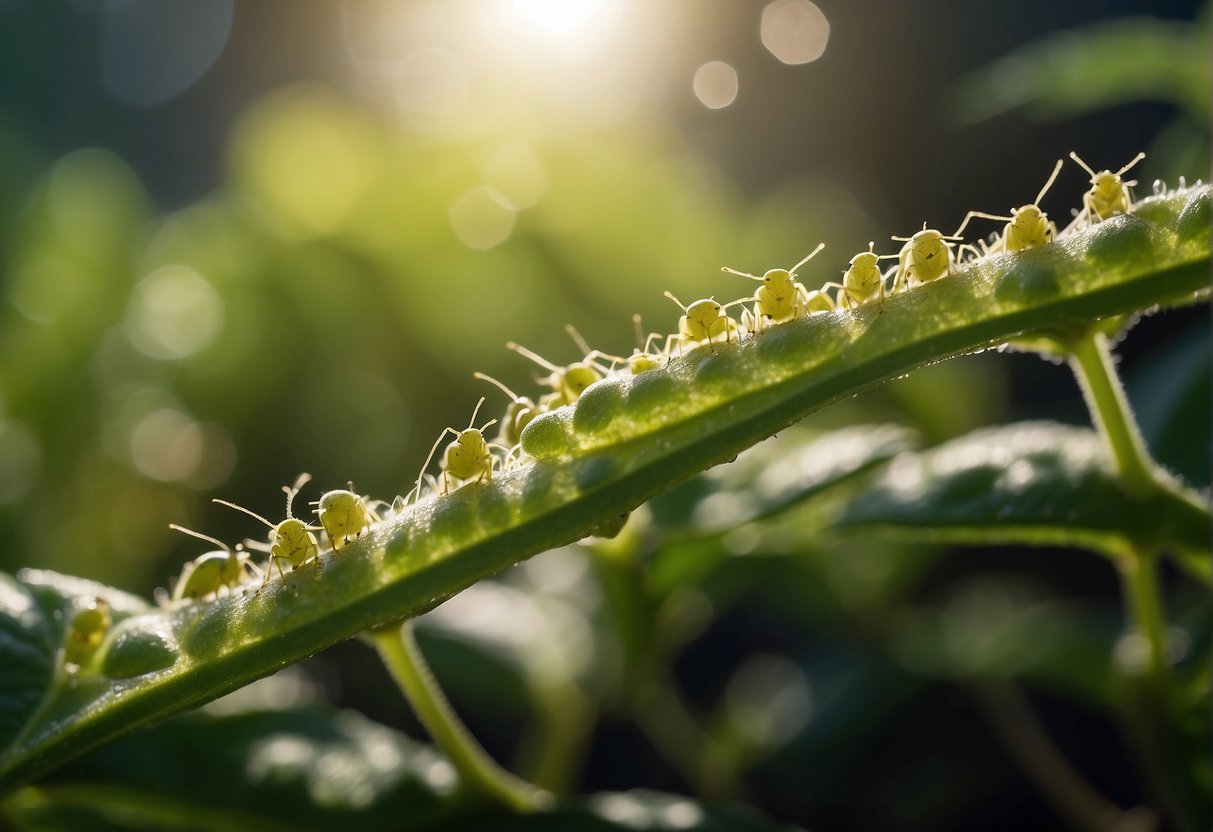
When it comes to controlling aphids on indoor plants, chemical control strategies can be effective. However, it is important to use these strategies with caution and follow the instructions carefully to avoid harming the plant or yourself.
Insecticidal Soaps and Oils
Insecticidal soaps and oils can be a good option for controlling aphids on indoor plants. These products work by suffocating the aphids and disrupting their cell membranes. Insecticidal soaps are made from potassium salts of fatty acids, while oils like neem oil are derived from the seeds of the neem tree.
When using insecticidal soaps and oils, it is important to thoroughly cover the plant with the product, as aphids can hide in hard-to-reach places. It may also be necessary to reapply the product every few days to ensure that all the aphids are eliminated.
Systemic Insecticides
Systemic insecticides are another option for controlling aphids on indoor plants. These products are absorbed by the plant and transported throughout its tissues, making them effective against aphids that are feeding on the plant’s sap.
Imidacloprid is a commonly used systemic insecticide that is effective against aphids. However, it is important to use this product with caution, as it can be harmful to bees and other beneficial insects.
Pyrethroids are another type of insecticide that can be effective against aphids. However, they can also be harmful to bees and other beneficial insects, so it is important to use them with caution.
Overall, chemical control strategies can be effective for controlling aphids on indoor plants. However, it is important to use these strategies with caution and follow the instructions carefully to avoid harming the plant or yourself.
Frequently Asked Questions

What are the signs that my indoor plants have aphids?
Aphids are tiny insects that are usually found on the undersides of leaves or on new growth. They are usually green or brown, but can also be black, yellow, or red. Signs of aphids on indoor plants include distorted or curled leaves, sticky residue on leaves or nearby surfaces, and the presence of ants, which are attracted to the honeydew that aphids secrete.
How can I control aphids on my houseplants using pesticides?
There are many pesticides available that can help control aphids on indoor plants. However, it is important to choose a product that is labeled for use on indoor plants and to follow the instructions carefully. Some common pesticides for aphids include neem oil, insecticidal soap, and pyrethrin-based sprays.
Can I use a homemade spray to treat aphids on my indoor plants?
Yes, there are several homemade sprays that can be effective in controlling aphids on indoor plants. One option is a mixture of water, dish soap, and vegetable oil. Another option is a mixture of water and rubbing alcohol. It is important to test any homemade spray on a small area of the plant first to make sure it does not cause damage.
What are effective methods for permanently eliminating aphids indoors?
While it can be difficult to permanently eliminate aphids indoors, there are several methods that can help control their population. These include regularly inspecting plants for signs of aphids, removing heavily infested leaves or branches, introducing natural predators like ladybugs or lacewings, and using sticky traps to catch adult aphids.
Is it necessary to discard a plant infested with aphids?
In most cases, it is not necessary to discard a plant that is infested with aphids. With proper treatment and care, the plant can recover. However, if the infestation is severe or the plant is already weakened, it may be best to discard the plant to prevent the spread of the infestation to other plants.
Are there any instant solutions to kill aphids on houseplants?
There are no instant solutions to kill aphids on houseplants. Even pesticides can take several days to be effective. It is important to be patient and persistent in treating aphids on indoor plants to achieve long-term control.


